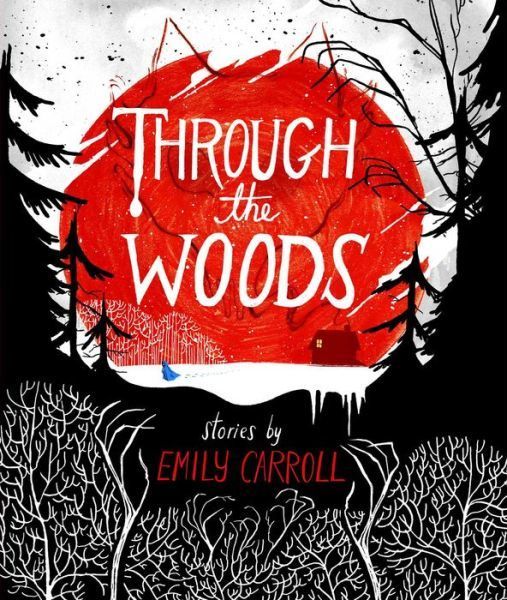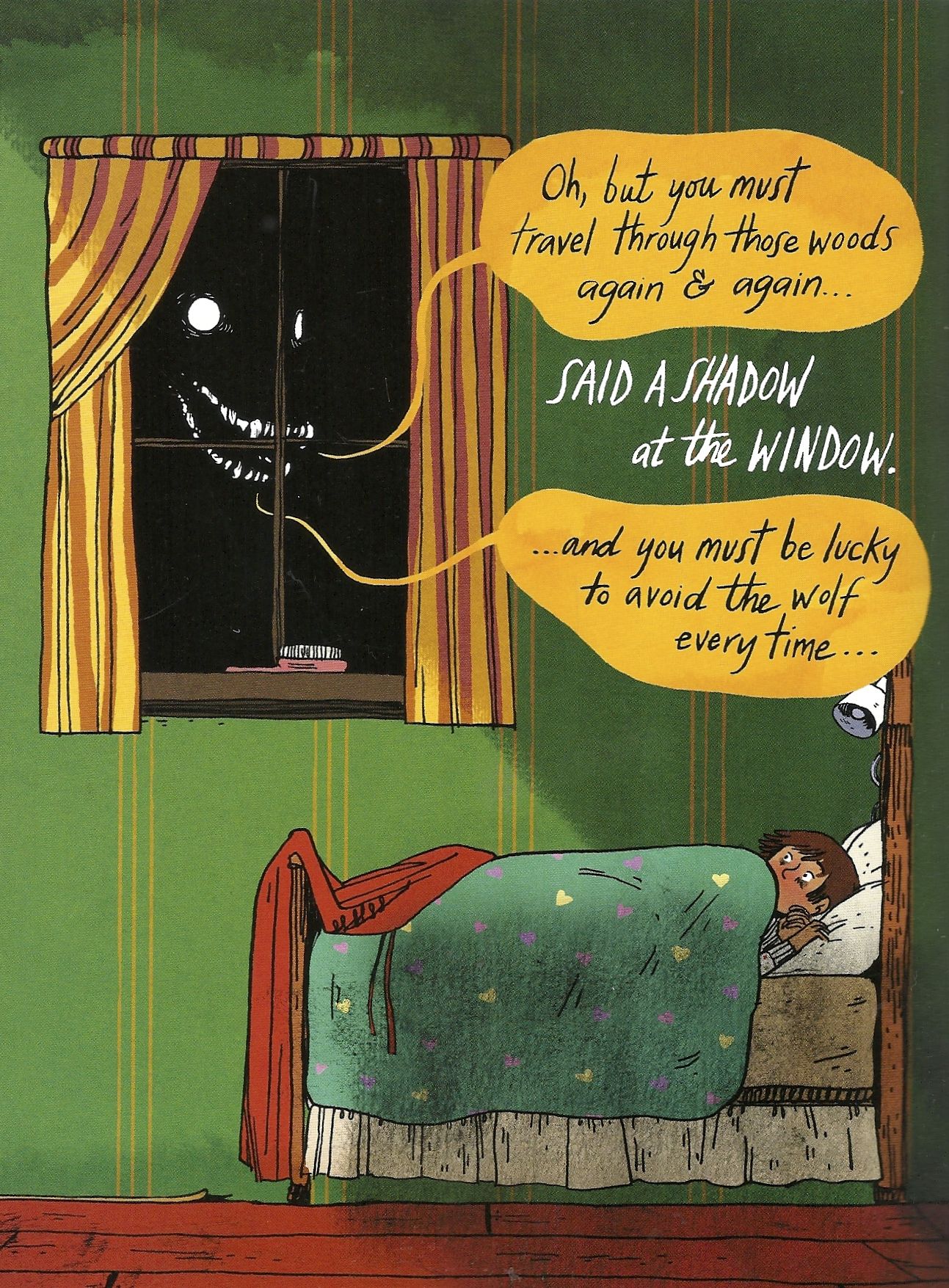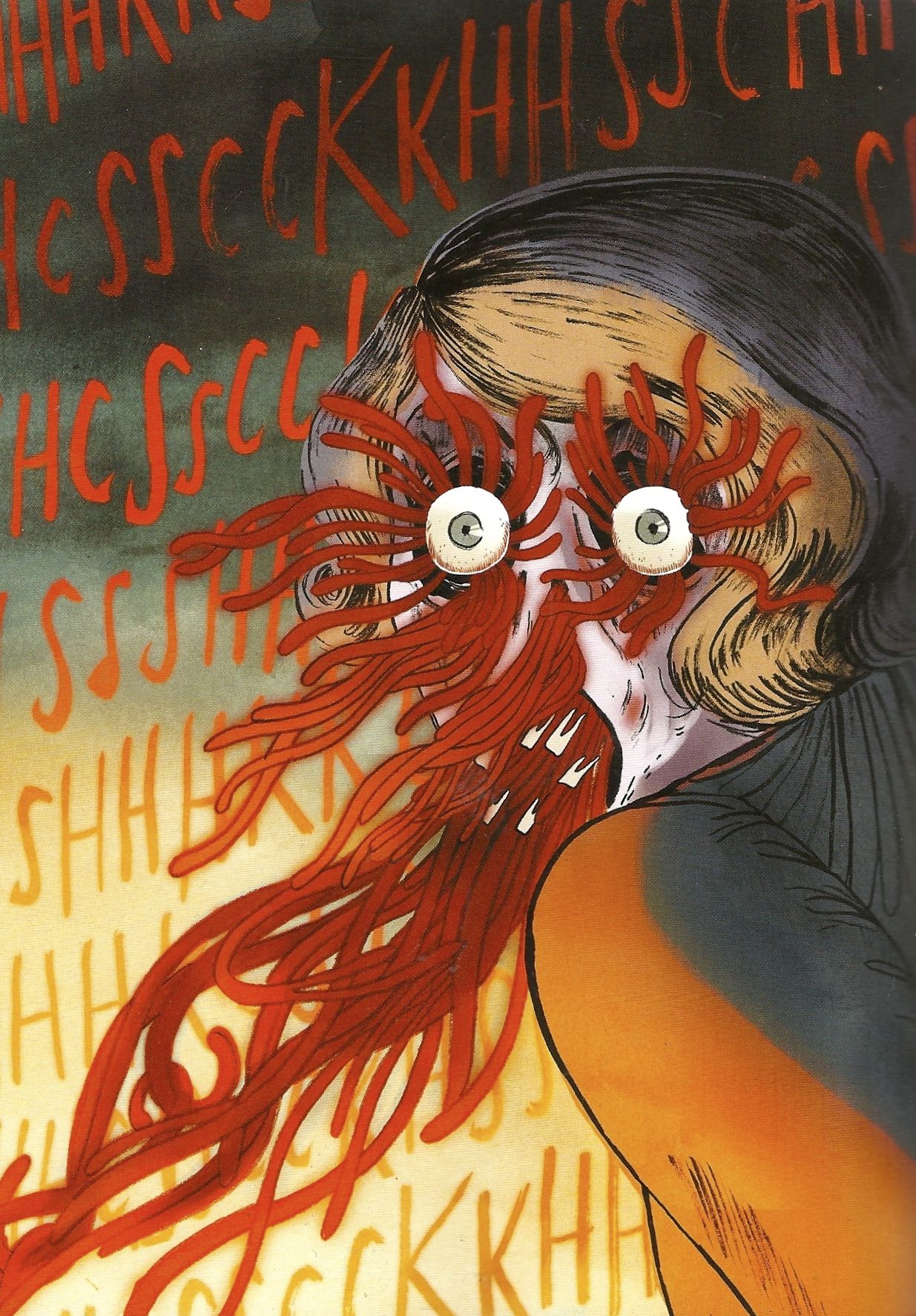A few of the short, scary stories in Emily Carroll's Through the Woods evoke elements of classic fairy tales. Some are quite direct, like the young woman in the conclusion who dons a red hood and cape to walk through the wilderness, avoiding a wolf. Others are more indirect, like the possibly murderous, Bluebeard-like husband in "A Lady's Hands Are Cold," or simply in the patterns of repeating events, like what happens to the three sisters in "Our Neighbor's House" or to the pairs of characters in "His Face All Red" and "My Friend Janna."
However, there are two sharp and immediate differences between Carroll's stories and the fairy tales they sometimes evoke.
First, Carroll's stories are told in comics form, although more artfully constructed than what you might expect to find on the new racks each Wednesday (her book comes courtesy of a Simon and Schuster imprint, rather than a traditional comics publisher).
Second, they're terrifying, some of them more H.P. Lovecraft or August Derleth than August Derleth or Wilhem and Jacob Grimm at their, well, grimmest. For example, the Little Red Riding Hood allusion in the conclusion, part of the set of stories that bookend the five gothic (in the traditional, literary sense) short stories that form the bulk of Carroll's collection, ends with the wolf, if that's really what it is, appearing in the dark outside the girl's window.
The creature is so large that what in one panel looked to be the moon turned out to be its eye; all we see of it is its massive white eyes, almost the size of the girl's head, and its similarly glowing white teeth. "You must travel those woods again & again," the wolf-thing says, "And you must be lucky to avoid the wolf every time ... But the WOLF ... the WOLF only needs enough luck to find you ONCE."
I think I'll take a take an average-sized wolf cross-dressing as a grandmother over a 10-foot-tall, bipedal one making convincing threats through my bedroom window any time.
The other stories each end with a portentous, scary statement; not exactly a stinger-style twist, akin to those of old EC horror comics and their imitators, but a sentence or phrase that relies on readers to fill in its exact meaning with their own imaginations.
In "Our Neighbor's House," three little girls are left alone when their father disappears into the woods, and must decide whether to wait longer than the allotted time for him to return, or journey next door. One by one, they disappear.
In "A Lady's Hands Are Cold," a young lady moves to a large estate to marry a rich man selected for her by her father, but immediately begins hearing sad songs emanating from behind walls and beneath floorboards, and takes action. (It's the great amount of blue Carroll uses here that also evokes the story of Bluebeard; here palette in the other stories is mostly dominated by whites, blacks, reds, grays and natural, nature colors.)
In "His Face All Red," which you can actually read on Carroll's website, a jealous man does something awful to his brother while they're hunting a beast that's been taking livestock, his action met by a far more terrible reaction. In "My Friend Janna," we meet two girls engaged in a sort of seance scam who become embroiled in a real ghost story. And in "The Nesting Place," we encounter the scariest of the monsters in the most modern of the generally ambiguously set stories — this one has an old-timey automobile in it.
Through the Woods is such a striking work, it can be difficult to think of other comics with which to compare it. Certainly some aspects of Carroll's design work suggests that of Richard Sala, with whom she shares a generally creepy, macabre aesthetic, but the two great artists have more differences than similarities, really.
Carroll composes each panel carefully, like a standalone illustration, if not a painting. It's possible to imagine these images appearing on a page or part of a page, surrounded by text telling similar stories. But while they all seem strong enough to exist in isolation, they're not created to be read that way; each flows perfectly naturally into the next. Carroll's classical-feeling scary stories are classical-style scary stories, only told in pictures with superimposed words rather than in the traditional manner.
Through the Woods is thus a completely 21st-century form used to tell new stories that read as if they could have been a centuries old.
Read this book, but maybe don't read it in the dark before bed.




